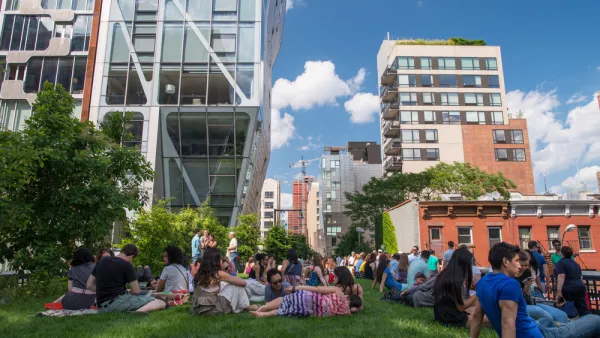A recent art project in Peru utilizes a robotic vehicle to trace a scale outline of a city into the empty desert, raising questions about urbanization in deserts and the formation of cities.
In this interview on We Make Money Not Art artist Rodrigo Derteano explains the project.
"I live and grew up in Lima. About 60% of the city today lies within the desert, most of it grew without any serious urban planning. It's a self-made metropolis, the second largest city built in the desert after Cairo. It grew from 1 million to 8 million people in less than 60 years. There's a lot of problems derived from this development in terms of sustainability and living standards which exacerbate the huge inequality of our society. The desert plays a big role in this regard. People living in desert areas of the city are usually poor and often have to pay more for water than those living in more centric (richer) areas. They also lack proper infrastructure and have much less public places and parks. For a long time, these areas were not considered part of the city by the ruling class and the authorities until they became the majority.
By drawing a gigantic map of a city onto the desert, the project not only seeks to draw attention to this facts, but questions our very concept of city, specially in regards to its environment. Lima is a sort of negation of the desert. Our model and ideal of city is very occidental, and does not adapt very well to its context. The desert is seen a kind of non-place, not a part of our living environment. In this sense, there's a sort of irony in using a robot to draw a city onto the desert, as if it would be drawing it on the surface of Mars (exploring the outer space for the possibility of urban life)."
FULL STORY: Ciudad Nazca, the robot tracing a city in the desert

National Parks Layoffs Will Cause Communities to Lose Billions
Thousands of essential park workers were laid off this week, just before the busy spring break season.

Retro-silient?: America’s First “Eco-burb,” The Woodlands Turns 50
A master-planned community north of Houston offers lessons on green infrastructure and resilient design, but falls short of its founder’s lofty affordability and walkability goals.

Delivering for America Plan Will Downgrade Mail Service in at Least 49.5 Percent of Zip Codes
Republican and Democrat lawmakers criticize the plan for its disproportionate negative impact on rural communities.

Test News Post 1
This is a summary

Test News Headline 46
Test for the image on the front page.

Balancing Bombs and Butterflies: How the National Guard Protects a Rare Species
The National Guard at Fort Indiantown Gap uses GIS technology and land management strategies to balance military training with conservation efforts, ensuring the survival of the rare eastern regal fritillary butterfly.
Urban Design for Planners 1: Software Tools
This six-course series explores essential urban design concepts using open source software and equips planners with the tools they need to participate fully in the urban design process.
Planning for Universal Design
Learn the tools for implementing Universal Design in planning regulations.
EMC Planning Group, Inc.
Planetizen
Planetizen
Mpact (formerly Rail~Volution)
Great Falls Development Authority, Inc.
HUDs Office of Policy Development and Research
NYU Wagner Graduate School of Public Service



























